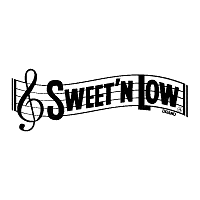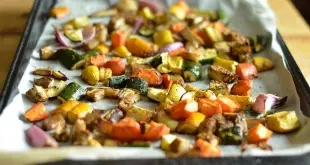Sugar substitutes
Wow…this has been a journey. We’re sort of sad to see it end! But it must. We do hope, though, that after today you feel a bit better informed about sugar (or at least not gun shy about doing your own investigation).
Today, let’s talk about sugar substitutes.
It’s entirely your decision whether or not to use sugar substitutes. We’ll be honest with you. Neither the medical community nor the food industry really knows the ultimate long-term effects of using sugar substitutes, however, right now they are our best tool for incorporating sweetened foods into our eating plans.
Here’s a breakdown of common sugar substitutes:
Sucralose
a.k.a. “Splenda”
Team Color: Yellow
Team Symbol:
Important points: Sucralose sounds a lot like “sucrose” doesn’t it? That’s for a reason. This sugar substitute is a derivative of sugar. While the label says it is 0 calories, that’s not necessarily true. Sucralose has calories, our bodies just can’t absorb them. It is also mixed with a starch to weight it down (by itself it’s so light it would literally fly away when trying to handle it). In packet form, this isn’t so much of a problem, but when you get to using cups of the stuff, you might want to consult some sort of nutrition calculator because the bulking agent does add calories and carbs to your recipes.
While all artificial sweeteners have been held to the spotlight for health risks, sucralose seems to have gotten off the easiest. One claim the makers of Splenda make, with which we have to disagree, would be that tastes like sugar. It tastes kind of like sugar. But our conception of sucrose lies also in its texture (granulated) and the caramelization effect it has on foods, which, despite our best efforts, is near impossible to replicate exactly.
Saccharin
a.k.a. “Sweet ‘n Low”
Team Color: Pink (although a lighter shade than this!)
Team Symbol:
Important Points: Saccharin has gotten a lot of flack for causing many medical ailments in people–from headaches to muscle spasms. The taste of this stuff is quite strong as it is about 400 times sweeter than sugar. We’ve not seen any evidence that conclusively supports warning you about saccharin use, so we leave that to your best judgement.
Nutri-Sweet (aspartame)
a.k.a. “Equal”
Team Color: Blue
Team Symbol:
-
Sugar substitutes, by themselves, are challenging to use in baked food. When you bake with sugar substitutes, you don’t get a nice, browned baked good (cake, cookie, etc.) without some extra effort and the consistency is different. The cooking time with sugar substitutes is generally shorter than with sugar. Splenda makes a “baking blend” however that baking blend does contain table sugar (sucrose). The same is true for the Splenda Brown Sugar blend.
-
One plus about using sugar substitutes is that you don’t necessarily have to blend them into drinks while they are hot to get the sweetness that you want. Whereas with sweet tea, it’s best to either add sugar to hot water or use simple syrup, with sugar substitutes, often you can simply add them to your drink and they will get sweet.
-
It IS possible, however, to make a simple syrup from a sugar substitute if you need to. Simply add one part sugar substitute to one part boiling water and stir until the sugar substitute has dissolved. Often simple syrups are used when you don’t want the grainy sugar/sugar substitute texture to be a part of your finished product.
-
There are several different kinds and you have to find the one YOU like best
-
You can bake with sugar substitutes, but there may be some extra steps involved to arrive at a final product comparable to using table sugar
-
Sugar substitute baking blends SOMETIMES include table sugar. Always check the nutrition label to see if a blend has sucrose in it.
 Bariatric Foodie Play with your food
Bariatric Foodie Play with your food






Equal and Sweet n Low are artificially concocted sweeteners. All made with things that our body cant process naturally.
Splenda, on the other hand, its chemically altered sugar.
(The source of this is my brother, who was a chemical engineer for Domino sugar in Brooklyn, NY)
For many years I was plagued with some horrific migraines. 6 years ago, I was pregnant with my son and the ob/gyn told me stay away from sweet n low or equal. Only use Splenda. woot! There went my migraines out the window. (Thank you LORD!!)
Even though my diabetes is gone thanks to WLS, I still dont use real sugar.
I use Truvia or agave nectar. It has no aftertaste, its natural, no calories.
Everyone has their preferences as to what works, what doesnt, etc. Just throwing my 2 cents in.. 🙂
Oh, we thank you for your two cents! Several folks messaged us about alternative natural sweeteners. We didn’t include them because we didn’t know enough about them to speak accurately. So thank you for speaking out on that! It’s very important for each of us to share what works. It helps all of us so much. Thanks for reading and sharing!
I also use stevia/truvia. I had a gastric sleeve gastrectomy done in January of this year. This is the sweetener that my dietitian recommended for me. I haven't tried baking with it yet! Just in tea, really.
I took a science class 20 in the late 70's and the only thing I can recall from it was about Sweet N Low. It is a genetic trait that determines whether or not saccharine tastes sweet or bad to you. To me, yuck. To many others, yum. Genetics. Rosanette from OH
I was wondering, do you know anything about Splenda's brown sugar blend? I've seen it on the shelf, and was thinking about trying to make bacon-wrapped little smokies. I wanted to see if anyone had tried it before I buy the blend.
That's a GREAT question. Pre-op, I (Nik) used the blend and did fine with it. Since RNY, I dump and Splenda baking blend contains sucrose, so I don't use it. Instead, I use a mixture of Splenda and a product called "Brown Sugar" Twin. Like I said, baking with sugar substitutes can be challenging, but I think I may just have it down!
Just want to thank you so much for all this great, comprehensive information on sugar & substitutes! I too, like another commenter get terrible migraines from artificial sweeteners, which obviously is a challenge post-op, as many of the things we eat that are "sugar free" have different artificial sweeteners in them. Splenda I can tolerate, so I stick to products with that in it, if need be. As an added sweetener to foods and drinks I am preparing, I am using Truvia. It sweetens things just enough, without an aftertate, to me. And, it was recommended by my surgeon's office as it is all natural, not a chemical.